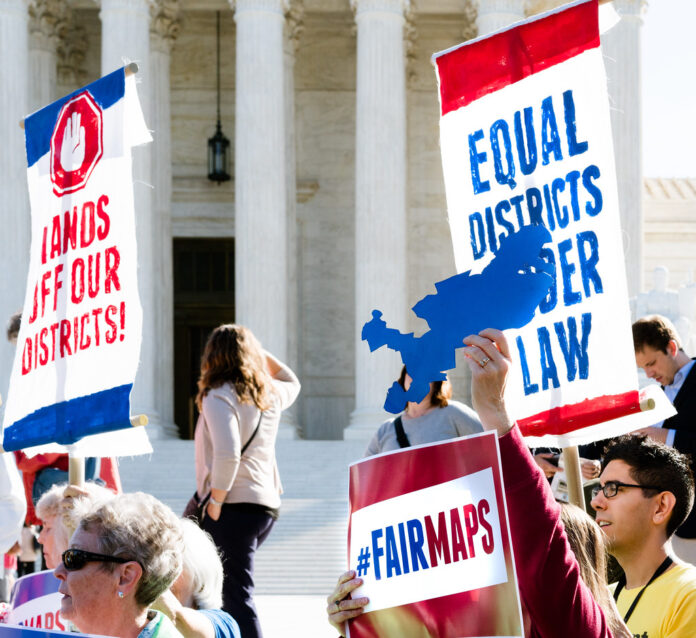Key Takeaways
- Gerrymandering is the redrawing of voting maps to benefit one party.
- Texas Republicans pushed a new map to boost their power in Congress.
- Blue states can fight back by threatening their own map changes.
- Voter rights and fair elections depend on public awareness and action.
Gerrymandering’s New Role in Texas Politics
Texas once elected a fiery progressive governor named Ann Richards. Now, Texas seems locked in a fight over voting maps instead of ideas. Recently, state leaders redrew congressional districts to give Republicans more seats. They called it a routine update. However, critics say it is gerrymandering—a way to shape districts for political gain.
State Representative Nicole Collier stayed in the House chamber overnight. She protested a rule forcing Democrats to use a police escort to leave. She argued that Republicans were treating her like an enemy. Many Texans spoke against the new map at public hearings. They said the redrawn lines ignore real communities and fair votes.
Ann Richards once urged Texans to embrace change and progress. Today’s map makers ignore that spirit. Instead, they twist district lines around rich suburbs and rural areas. By drawing weird shapes, they pack or split certain voters. This tactic shifts power away from Democrats and towards Republicans.
How Gerrymandering Works Against Voters
Gerrymandering starts after each census, when states redraw district borders. Ideally, maps reflect population shifts. Yet, in many states, the party in charge bends them in its favor. They either “pack” voters of the other side into a few districts or “crack” them across many. Both methods dilute opposing voices.
In Texas, the Republican governor and legislature moved boundaries to grab five extra seats. They ignored public testimony and stalled healthy debate. Then, they forced the new map through a quick vote. This map now heads to courts, where judges will decide its fate. Meanwhile, elections loom on the horizon.
Sadly, gerrymandering hurts everyone. It makes some votes worth more than others. It also discourages voters who feel their voices don’t matter. Thus, fewer people turn out on election day. That can give extreme candidates an advantage, since their supporters are often the most motivated.
Fighting Gerrymandering with Blue State Power
Other states can push back. California’s governor can promise to redraw maps if gerrymandering spreads. New York, Illinois, and other states could join. By matching red state changes seat for seat, blue states remove the incentive to cheat. Instead of a race to the bottom, states could hold a race to preserve fair elections.
Moreover, states can set up independent redistricting commissions. These groups use neutral rules rather than political goals. Commissions can limit map manipulations and insist on clear district shapes. They can also ensure that each community links with leaders who understand its needs.
If enough states vow to counter gerrymandering, it could spark a national shift. Politicians in gerrymandered states might think twice before bending maps. They would know that their gains would be offset by losses elsewhere. This kind of balance can help protect democracy.
Other Parts of Trump’s Plot
Gerrymandering is just one piece of a larger plan. First, there is the effort to end mail-in voting. Critics claim mail ballots are prone to fraud. Yet, experts say they are safe and efficient. Removing them would make voting harder for many people.
Second, the plan targets voting machines. The proposal calls machines “inaccurate” and “too costly.” Instead, it suggests a return to paper ballots. While paper ballots can work well, banning all machines would slow vote counts. It could also create new chances for error or tampering.
Third, there is talk of sending federal forces into big cities. These are mainly run by Democratic mayors. The goal seems to be to intimidate urban voters. Troops and federal agents could discourage people from voting in person. This tactic echoes past efforts to control minority votes.
What We Can Do to Save Fair Elections
We must act now. We can join local and national groups fighting gerrymandering and voting restrictions. We can support ballot measures to set up independent map makers. We can also lobby legislators to protect mail-in voting and maintain reliable voting machines.
Furthermore, we can spread the word. When friends and family know about these threats, they can push back. We can write letters, call our representatives, and attend town halls. Every voice counts when democracy is at risk.
Finally, we can hold officials accountable in the courts. Legal challenges have stopped unfair maps before. Courts have the power to demand new, fair maps. By funding and supporting these cases, we strengthen our defense of voting rights.
We owe it to ourselves and future generations to guard fair elections. Gerrymandering and other tactics threaten the core of democracy. But together, we can ensure every vote truly counts.
Frequent Questions
How does gerrymandering affect local community voices?
It splits or packs neighborhoods, making some voices too weak to influence elections.
Can state courts block unfair gerrymandered maps?
Yes. Judges can rule that maps violate constitutions and order new maps.
Are independent commissions common for redistricting?
A growing number of states use them to reduce political bias in map drawing.
What can I do if my state restricts mail-in voting?
You can join advocacy groups, call your lawmakers, and support legal challenges.

